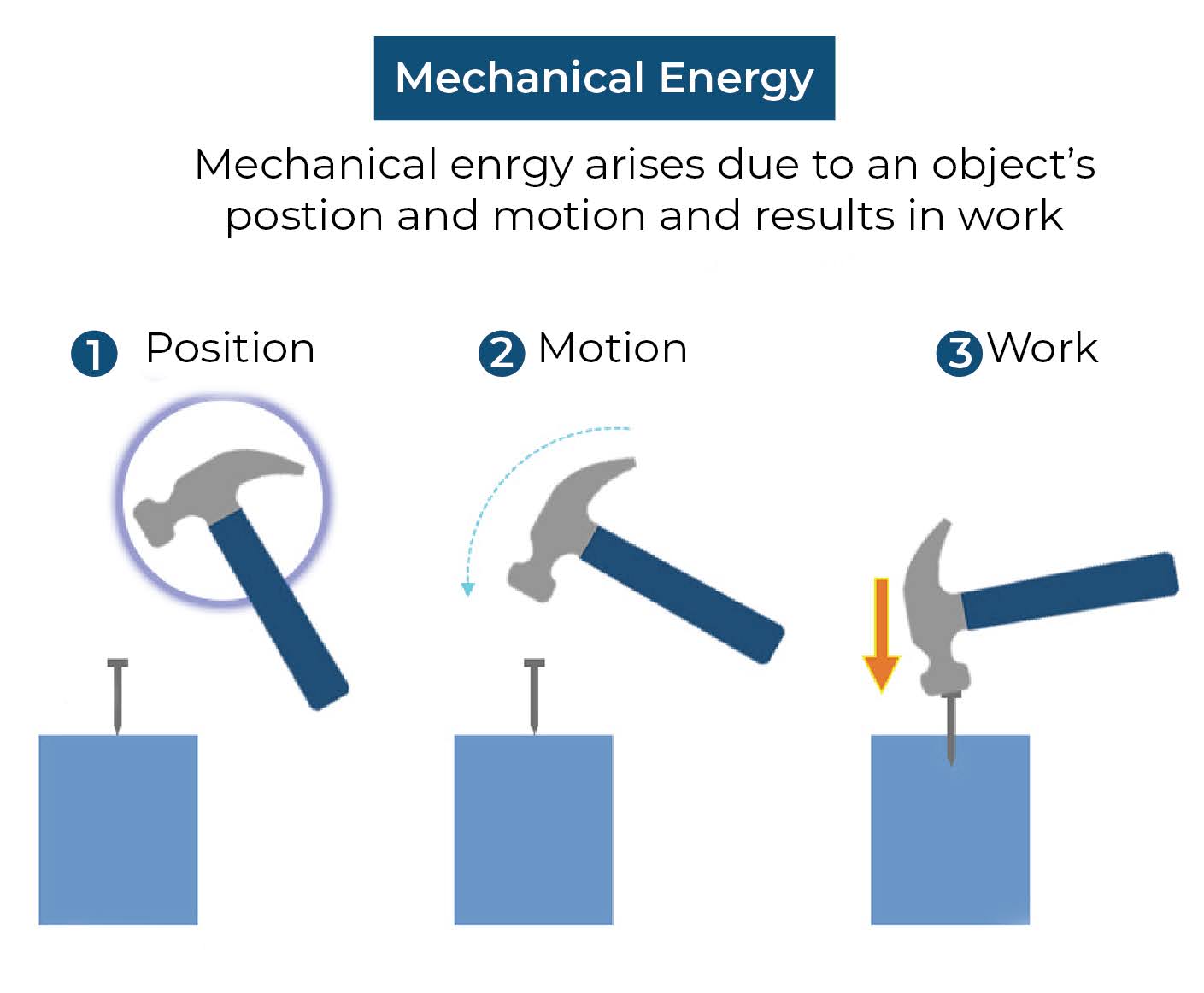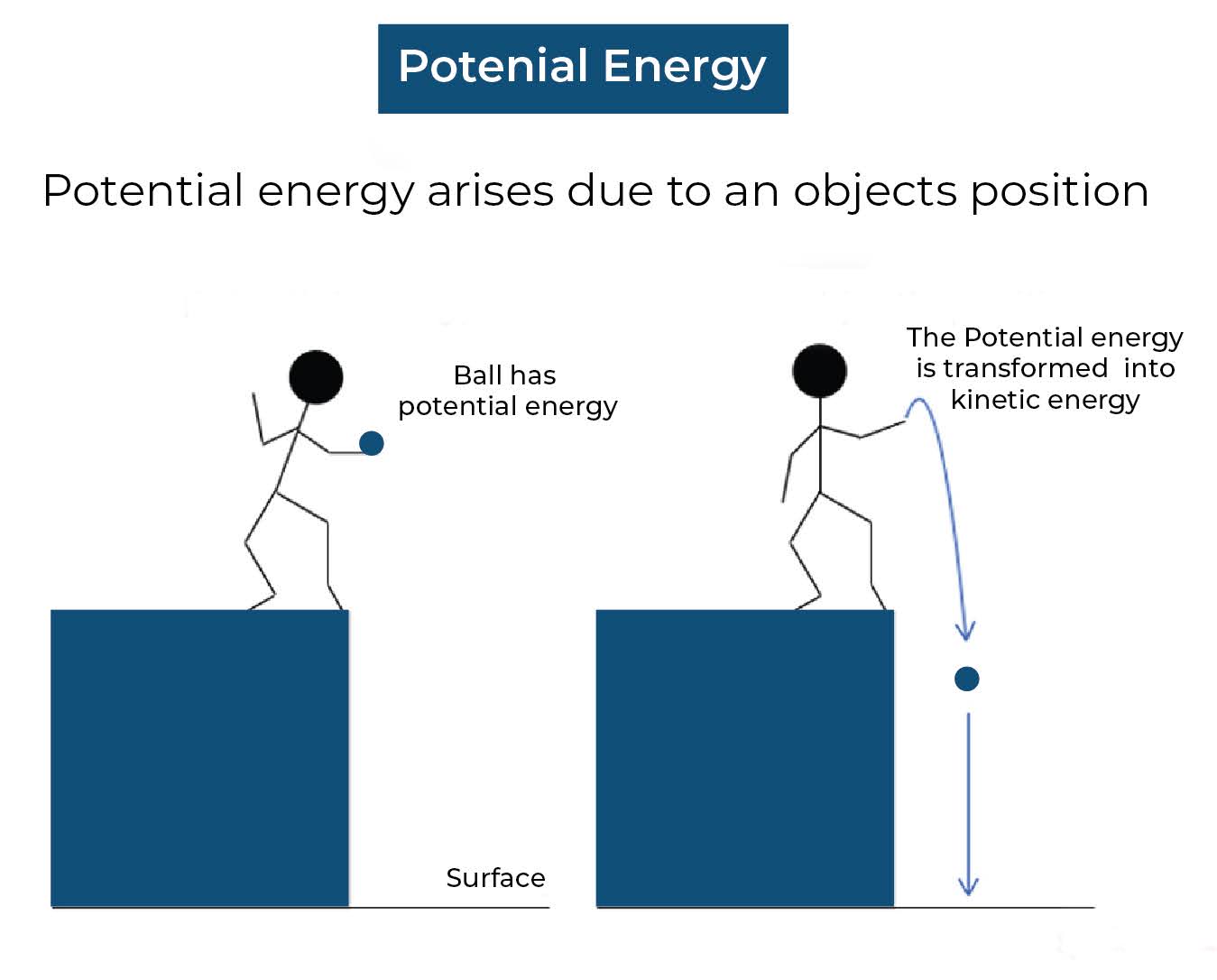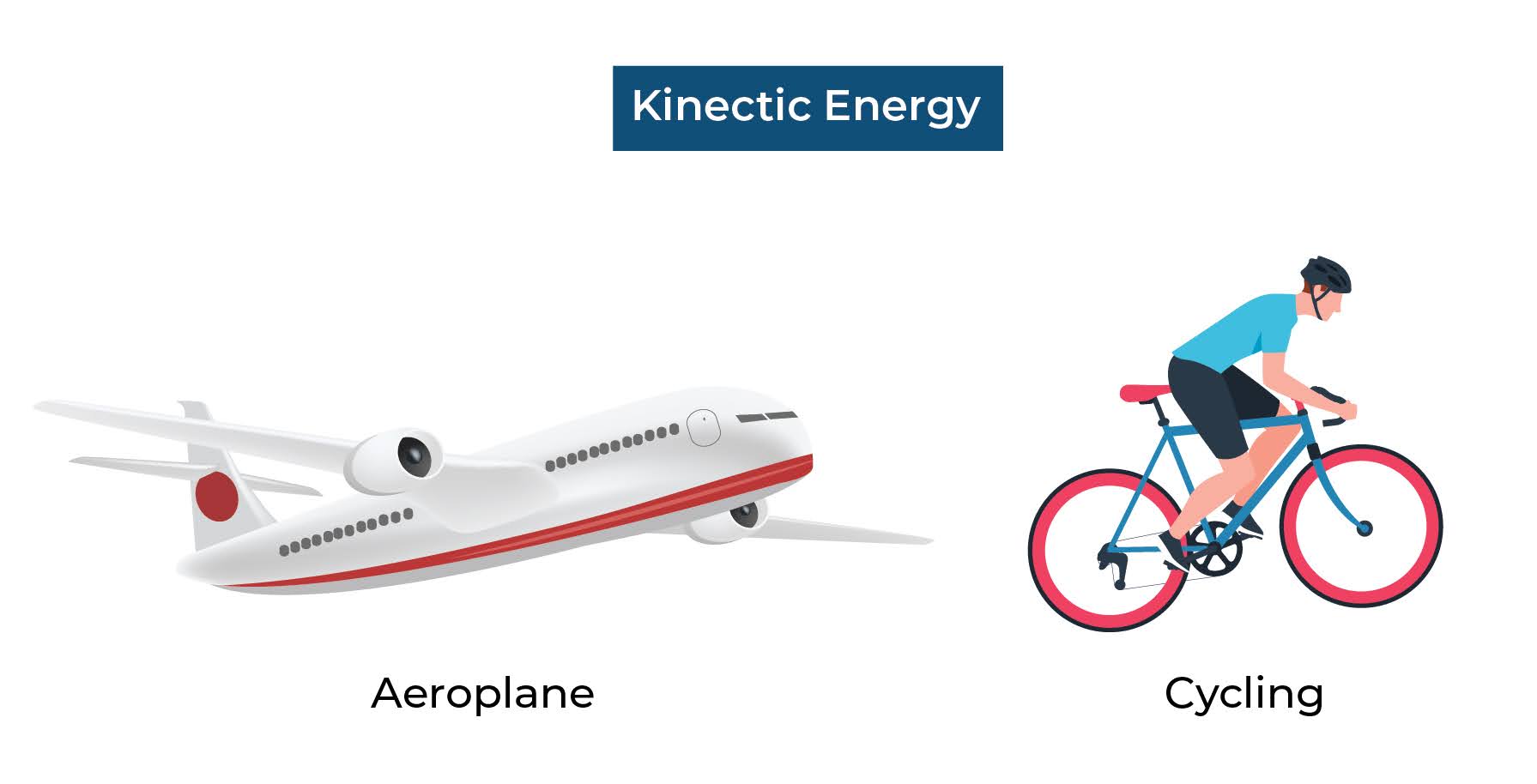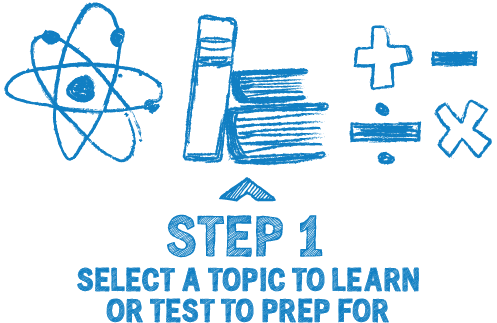What is Mechanical Energy?
Grade 6 Science Worksheets
Mechanical energy is the sum of potential energy and kinetic energy that a system possesses due to the position, motion, or deformation of its physical components.
Table of Contents:
- What is Mechanical Energy?
- Conservation of Mechanical Energy
- Mechanical Energy & Power
- Examples
- FAQs
What is Mechanical Energy? - Grade 6 Science Worksheet PDF
This is a free printable / downloadable PDF worksheet with practice problems and answers. You can also work on it online.
|
|
Untimed |
|
Sign up with your email ID to access this free worksheet.
"We really love eTutorWorld!"
"We really love etutorworld!. Anand S and Pooja are excellent math teachers and are quick to respond with requests to tutor on any math topic!" - Kieran Y (via TrustSpot.io)
"My daughter gets distracted easily"
"My daughter gets distracted very easily and Ms. Medini and other teachers were patient with her and redirected her back to the courses.
With the help of Etutorworld, my daughter has been now selected in the Gifted and Talented Program for the school district"
- Nivea Sharma (via TrustSpot.io)
What is Mechanical Energy?
Mechanical Energy is a form of energy that can be stored in objects and can be converted into other forms of energy, such as electrical, thermal, or chemical energy.
Potential energy is the energy an object has due to its position or configuration in a gravitational, electric, or elastic field. For example, a stretched spring or a ball at the top of a hill has potential energy.
Kinetic energy is the energy an object has due to its motion. For example, a moving car or a spinning turbine has kinetic energy.
Mechanical energy is conserved in a closed system, meaning that it can be neither created nor destroyed, but it can be transferred or transformed.
For example, when a ball is thrown into the air, it has mechanical energy in the form of potential energy due to its height, and kinetic energy due to its motion. As the ball falls back down, its potential energy is converted into kinetic energy, until it reaches the ground with zero potential energy and maximum kinetic energy.
In summary, mechanical energy is a type of energy associated with the motion and position of physical objects, and it is conserved in a closed system.
Conservation of Mechanical Energy
The conservation of mechanical energy is a fundamental principle in physics that states that in a closed system, the total amount of mechanical energy (potential energy plus kinetic energy) remains constant, provided there is no external work done on the system.
This means that mechanical energy can be neither created nor destroyed, but can be converted from one form to another.
For example, consider a simple pendulum consisting of a mass suspended by a string. When the pendulum is at its highest point, it has maximum potential energy, and no kinetic energy.
As it swings down, the potential energy is converted into kinetic energy, and at the bottom of the swing, the pendulum has maximum kinetic energy and zero potential energy.
As it swings back up, the kinetic energy is converted back into potential energy, until it reaches the highest point again. During the entire motion, the total mechanical energy of the pendulum remains constant.
The conservation of mechanical energy can be expressed mathematically as follows:
E_mech = K + U = constant
where E_mech is the total mechanical energy, K is the kinetic energy, and U is the potential energy. This equation is known as the law of conservation of mechanical energy.
However, it is important to note that the conservation of mechanical energy only holds true in closed systems where there is no external work done on the system. In real-world situations, there is always some friction or other external forces acting on the system, which can cause the mechanical energy to be dissipated or lost.
Mechanical Energy & Power:
Potential and kinetic energy sources from which mechanical energy is generated by converting them into power. Turbines that are powered by steam, water, wind, gas, or liquid fuels are a few examples of this.
Before being used as power, machines are frequently used to convert other forms of energy. We can use mechanical energy however we want or need it to function once it has been altered in a specific way.
“There have been times when we booked them last minute, but the teachers have been extremely well-prepared and the help desk at etutorworld is very prompt.
Our kid is doing much better with a higher score.”
6th Grade Tutoring
eTutorWorld offers Personalized Online Tutoring for Math, Science, English, and Standardised Tests.
Our Tutoring Packs start at just under $22.49 per hour, and come with a moneyback guarantee.
Schedule a FREE Trial Session, and experience quality tutoring for yourself. (No credit card required.)
Examples of Mechanical Energy:
Example 1:
A “wind farm” is a typical sight in some rural areas. At the so-called wind farm, high-speed winds are used to perform maintenance on a turbine’s blades. The ability to exert a force and move the blades is provided by the mechanical energy of the flowing air particles.
In order to power electrical appliances in homes, businesses, and other spaces, the spinning blades’ mechanical energy is later transformed into electrical energy. Wind that is moving can exert force on the blades because it possesses mechanical energy (in the form of kinetic energy). Mechanical energy has the capacity to perform labour once more.
Example 2:
Another illustration of how mechanical energy from one thing can affect another is a dart gun. A dart gun has mechanical energy when it is loaded and the springs are compressed.
The springs have the potential to exert force on the dart in order to move it thanks to the mechanical energy of the compressed springs. The springs’ mechanical energy, which takes the form of elastic potential energy, allows them to exert force on the dart. Work-enabling energy is known as mechanical energy.
Example 3:
Another illustration of how mechanical energy is an object’s capacity to perform work may be seen any evening at your neighbourhood bowling alley. A bowling ball’s mechanical energy enables it to exert force on a bowling pin and move it with the help of the pin.
The large ball can move the pin because it contains mechanical energy (in the form of kinetic energy). Work-enabling energy is known as mechanical energy.
Example 4:
There are numerous instances when an object possessing mechanical energy can use that energy to exert a force that displaces another object. The enormous wrecking ball of a demolition machine is a prime illustration.
The wrecking ball is a large device that is swung backwards to an elevated position and then let to swing forward into a building structure or other object to destroy it. The structure is struck by the wrecking ball, which exerts force on it and moves the building’s wall as a result.
Example 5:
A tool that works by using mechanical energy is a hammer. A hammer’s ability to exert force on a nail in order to move it is made possible by the mechanical energy it possesses.
The hammer can function on the nail because it possesses mechanical energy (in the form of kinetic energy). Work-enabling energy is known as mechanical energy.
Example 6:
Roller coasters are another example of mechanical energy in action. As the roller coaster climbs to the top of the first hill, it gains potential energy due to its height.
As it then falls down the hill, this potential energy is converted into kinetic energy, which propels the coaster along the track. The coaster continues to go up and down hills, converting potential energy into kinetic energy and vice versa, until it finally comes to a stop at the end of the ride.
Example 7:
Hydraulic systems, such as those used in construction equipment, also rely on mechanical energy. A hydraulic system uses a liquid, such as oil, to transmit force from one point to another. The system converts mechanical energy into hydraulic energy, which is then used to operate the equipment.
Do You Stack Up Against the Best?
If you have 30 minutes, try our free diagnostics test and assess your skills.
Mechanical Energy FAQS
What is mechanical energy?
Mechanical energy is the sum of potential energy and kinetic energy that a system possesses due to the position, motion, or deformation of its physical components.
What is the formula for mechanical energy?
The formula for mechanical energy is: E_mech = K + U, where E_mech is the total mechanical energy, K is the kinetic energy, and U is the potential energy.
What are some examples of mechanical energy?
Some examples of mechanical energy include the motion of a car, the swing of a pendulum, the potential energy of a stretched spring, and the kinetic energy of a moving object.
What is the law of conservation of mechanical energy?
The law of conservation of mechanical energy states that in a closed system, the total amount of mechanical energy remains constant, provided there is no external work done on the system.
What is the unit of mechanical energy?
The unit of mechanical energy in the International System of Units (SI) is joule (J).
How is mechanical energy different from other forms of energy?
Mechanical energy is a form of energy associated with the motion and position of physical objects, while other forms of energy, such as thermal, electrical, and chemical energy, are associated with the internal properties of matter.
Can mechanical energy be converted into other forms of energy?
Yes, mechanical energy can be converted into other forms of energy, such as electrical energy in a generator, thermal energy in a brake, or sound energy in a vibrating object.
Is mechanical energy conserved in all situations?
No, the conservation of mechanical energy only holds true in closed systems where there is no external work done on the system. In real-world situations, there is always some friction or other external forces acting on the system, which can cause the mechanical energy to be dissipated or lost.

Kathleen Currence is one of the founders of eTutorWorld. Previously a middle school principal in Kansas City School District, she has an MA in Education from the University of Dayton, Ohio. She is a prolific writer, and likes to explain Science topics in student-friendly language. LinkedIn Profile
Affordable Tutoring Now Starts at Just $22.49
eTutorWorld offers affordable one-on-one live tutoring over the web for Grades K-12. We are also a leading provider of Test Prep help for Standardized Tests (SCAT, CogAT, MAP, SSAT, SAT, ACT, ISEE, and AP).
What makes eTutorWorld stand apart are: flexibility in lesson scheduling, quality of hand-picked tutors, assignment of tutors based on academic counseling and diagnostic tests of each student, and our 100% money-back guarantee.
Whether you have never tried personalized online tutoring before or are looking for better tutors and flexibility at an affordable price point, schedule a FREE TRIAL Session with us today.
*There is no purchase obligation or credit card requirement
Grade 6 Science Worksheets
- Inquiry process
- Nature of Science
- Scientific Inquiry
- Inquiry, Analysis and Problem Solving
- Ethical Practices
- Science and Society
- Biotic and Abiotic Factors
- Impact of Organisms
- Adaptation
- Spheres of Earth
- Natural Resources
- Environmental Issues
- Conservation of Earth
- Understanding Technology
- Abilities To Do Technological Design
- Structure of Earth
- Solar System
- Rocks and Fossils
- Earth Systems
- Plate Tectonics
- Evolution
- Magnetic Field of Earth
- Geologic Time
- Materials and Processes That Shape a Planet
- Astronomy
- Ecology
- Energy
- Kinetic and Potential Energy
- Energy Transfer
- Matter and its Structure
- States of Matter
- Physical and Chemical Changes
- Force and Motion
- Electricity and Magnetism
- Wave Interactions
- Sound
- Light
- Introduction to Life Science
- The Origin & History of Life On Earth
- Plant and Animal Cells
- Parts of a Cell
- The Cell Cycle
- How Living Organisms Get Energy
- Classification of Organisms
- How Plants Grow & Reproduce
- The Human Respiratory System
- The Human Cardiovascular System
- The Human Digestive System
- The Human Endocrine Systems
- The Human Nervous System
- The Human Muscular System
- The Human Skeletal System
IN THE NEWS

Our mission is to provide high quality online tutoring services, using state of the art Internet technology, to school students worldwide.
Online test prep and practice
SCAT
SSAT
ISEE
PSAT
SAT
ACT
AP Exam
Science Tutoring
Physics Tutoring
Chemistry Tutoring
Biology Tutoring
Math Tutoring
Pre-Algebra Tutoring
Algebra Tutoring
Pre Calculus Tutoring
Calculus Tutoring
Geometry Tutoring
Trigonometry Tutoring
Statistics Tutoring
Quick links
Free Worksheets
Fact sheet
Sales Partner Opportunities
Parents
Passive Fundraising
Virtual Fundraising
Our Expert Tutors
Safe and Secure Tutoring
Interactive Online Tutoring
After School Tutoring
Elementary School Tutoring
Middle School Tutoring
High School Tutoring
Home Work Help
Math Tutors New York City
Press
©2022 eTutorWorld Terms of use Privacy Policy Site by Little Red Bird
©2022 eTutorWorld
Terms of use
Privacy Policy
Site by Little Red Bird













